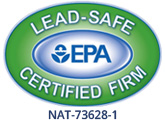Pros and Cons of Using Copper Pipes
 Copper is one of the most common materials recommended for plumbing pipes. Whether you are replacing older pipes or having your bathroom completely redone, copper delivers the strength of steel without rusting and is ideal for protecting gas lines. Yet the material can have its drawbacks. Here’s what you should know before starting your next project.
Copper is one of the most common materials recommended for plumbing pipes. Whether you are replacing older pipes or having your bathroom completely redone, copper delivers the strength of steel without rusting and is ideal for protecting gas lines. Yet the material can have its drawbacks. Here’s what you should know before starting your next project.
Pros of Copper Pipes
Copper pipes have an edge over older materials and modern-day plastic options in several ways, including durability, sustainability and weight.
Durability
Copper continues to be one of the most durable and long-lasting pipe materials available. These pipes withstand pressure up to 1,000 PSI and can last up to 70 years. For areas with fluctuating temperatures, this strength means the material expands less and you’re less likely to experience a burst pipe when ice freezes inside. At the same time, they’re relatively lightweight compared to older metal pipes.
Generally speaking, copper provides better corrosion resistance compared to older steel pipes. By contrast, steel gradually rusts and breaks down, causing “rot” inside the pipe that affects water quality. Considering durability from a holistic perspective:
- Copper offers antibacterial properties, which means bacterial growth is less likely to affect your pipes. Plastic pipes are more likely to harbor bacteria colonies that can alter water quality.
- Copper provides better heat resistance than plastic piping. For this reason, it’s used more frequently for plumbing to the hot water heater and other appliances and for various outdoor applications. Plastic pipes start to degrade from UV exposure.
- Copper pipes require fewer supports than other materials, which makes them ideal for adding plumbing to a longer or wider area.
- Copper is also fire resistant, due to a high thermal rating.
More Environmentally Friendly
Copper tends to be a more eco-friendly plumbing choice than plastic and other metals:
- Copper doesn’t contain lead, which lessens the risk of water contamination as the pipes age.
- Copper won’t emit harmful substances when exposed to heat or light, a risk with plastic pipes when installed outdoors.
- Copper pipes can be recycled.
- Copper pipes are made of a naturally occurring metal rather than a synthetic substance.
- Manufacturing copper pipes generates fewer emissions.
Lightweight
Lightweight construction proves to be advantageous for multiple reasons:
- Copper pipes are easier to install and can be added to multiple locations.
- The material is relatively flexible.
- A lighter weight requires fewer supports. As such, copper pipes involve less effort to install over a larger area.
Cons of Copper Pipes
Despite the pros, copper pipes can have a few downsides:
- More Expensive: Compared to plastic-based options, copper pipes come with a higher price tag. As a result, PVC and PEX tend to be the default for more economical projects.
- Not Indestructible: Water quality can affect copper pipes, causing corrosion from within that emerges as pinhole leaks. This pattern can begin if your region has water with an acidic or lower pH. Copper pipes can still burst if the water freezes inside and, compared to PEX, they do not provide consistent insulation.
- Water Flavor: Some homeowners report a slightly metallic flavor to the water once copper pipes are installed.
- PEX is Stronger for Certain Applications: Due to issues with water acidity, copper pipes are not ideal for all applications. PEX pipes are favored for bringing well water to a home and tend to fit better into narrow spaces. Plastic also offers a more visible option when a project calls for color-coded pipes.
Does your home need new or updated plumbing? Work with MJ Fahy & Sons to determine if copper pipes are right for the job!. To learn more, contact us today.




